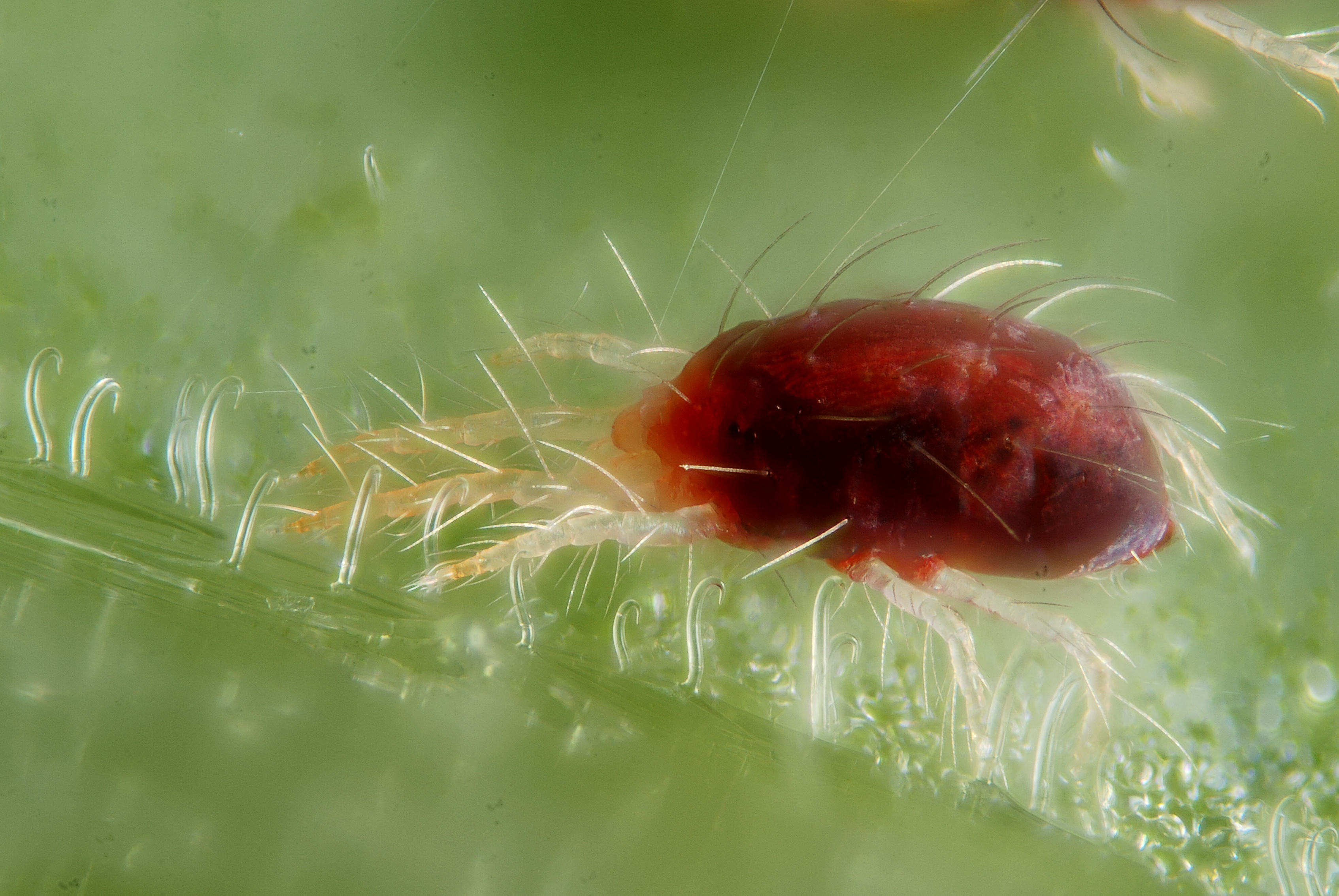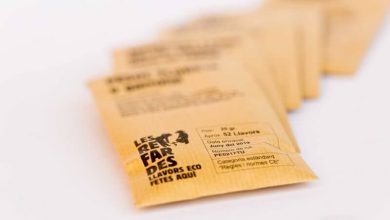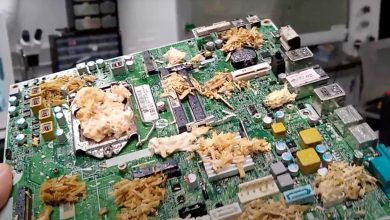Biological control in cannabis cultivation- Alchimia Grow Shop
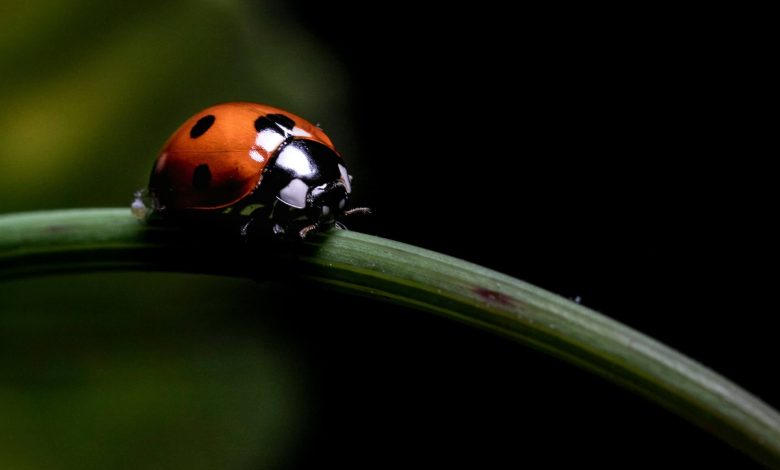
Cannabis is a plant that, like any other crop, is exposed to a variety of pests that can compromise its growth, production, and final quality. From small insects to fungi and bacteria, pests can cause havoc if you don’t control them in time and let them run their course, for they can even completely ruin your harvest and ruin your efforts over the last few weeks. Thus, it is not unusual to see how growers use a series of phytosanitary products intended for pest control to ensure the health of their plants, whether they are organic or chemical products.
Well, instead of resorting to chemical pesticides that can leave unwanted residues on the plant and, no less importantly, damage the environment, biological control in marijuana cultivation has become an increasingly popular and sustainable alternative. This approach involves the use of natural enemies of pests to keep the ecosystem in balance, allowing for effective and ecological control of unwanted pests in cannabis cultivation. Today we will tell you all about this practice and present some of the options available to you on our website.
The most common pests in cannabis
You may already have experience growing cannabis and know some of the main pests that usually attack it, but if not, below we summarize the most common ones, whether we are talking about indoor or outdoor cultivation. And, of course, we recommend that you take a look at the post below the list to learn more about these potential threats to your plants. As they say, knowledge is power! These are some of the pests that you should start to familiarize yourself with if you are going to start growing cannabis:
- Red spider mites: These tiny mites feed on the sap of the leaves, weakening the plant and reducing its capacity for photosynthesis.
- Thrips: Small insects that pierce the surface of leaves to extract their cellular contents.
- Aphids: They feed on tender shoots, weakening the plant and promoting the formation of mold.
- Whiteflies: These insects settle on the underside of leaves and excrete a sticky substance that encourages the growth of fungi.
- Mealybugs and caterpillars: They feed on different parts of the plant, including the roots and leaves, even drilling into the buds in the case of caterpillars, affecting their development.
These pests not only damage the plant directly but can also transmit secondary diseases, such as pathogenic fungi or viruses, which can greatly aggravate the situation. That is why experienced growers do not take pest prevention and control lightly and actively combat the potential appearance of pests from the earliest stages of their plants’ lives.
Introduction to cannabis pests and diseases
A brief summary of common pests and diseases that affect cannabis plants. Insects, aphids, molds, viruses…we have lots of potential enemies for our plants, and managing them properly is a key factor for a successful crop. Learn everything you need to prevent and eradicate these annoying guests.
Biological control and cannabis cultivation
Unlike the use of insecticides, which are usually diluted in water and sprayed on plants or directly applied to them, biological pest control in crops is a technique that uses living organisms to combat insects and diseases that affect plants. This method is a much more ecological alternative to chemical pesticides, promoting a balanced ecosystem with the introduction of new elements that will slow the development of the pest in question.
The organisms used can be predators, parasites, or natural pathogens of pests, such as beneficial insects (ladybirds, predatory mites) and bacteria (such as Bacillus thuringiensis). Biological control reduces the environmental impact and toxic residues present both on your plants and in their environment, preserving soil health and biodiversity. It is essential in sustainable agriculture and organic crops and has been used for decades with great success.
Among others, three types of organisms are mainly used for cannabis cultivation:
- Predatory mites: Such as Phytoseiulus persimilis, Amblyseius swirskii, Stratiolaelaps Scimitus, or Coccinellidae, the famous ladybirds. They are mainly used to eliminate pests in the aerial part of the plant.
- Entomopathogenic nematodes: For example, Steinernema Feltiae. These tiny worms attack soil-dwelling pest larvae. This technique helps create a balance in the crop ecosystem, where pests are controlled naturally without harming the plant, soil, or surrounding environment.
- Bacteria: Such as Bacillus Thuringiensis, widely used to prevent the attack of the dreaded caterpillars in outdoor crops.
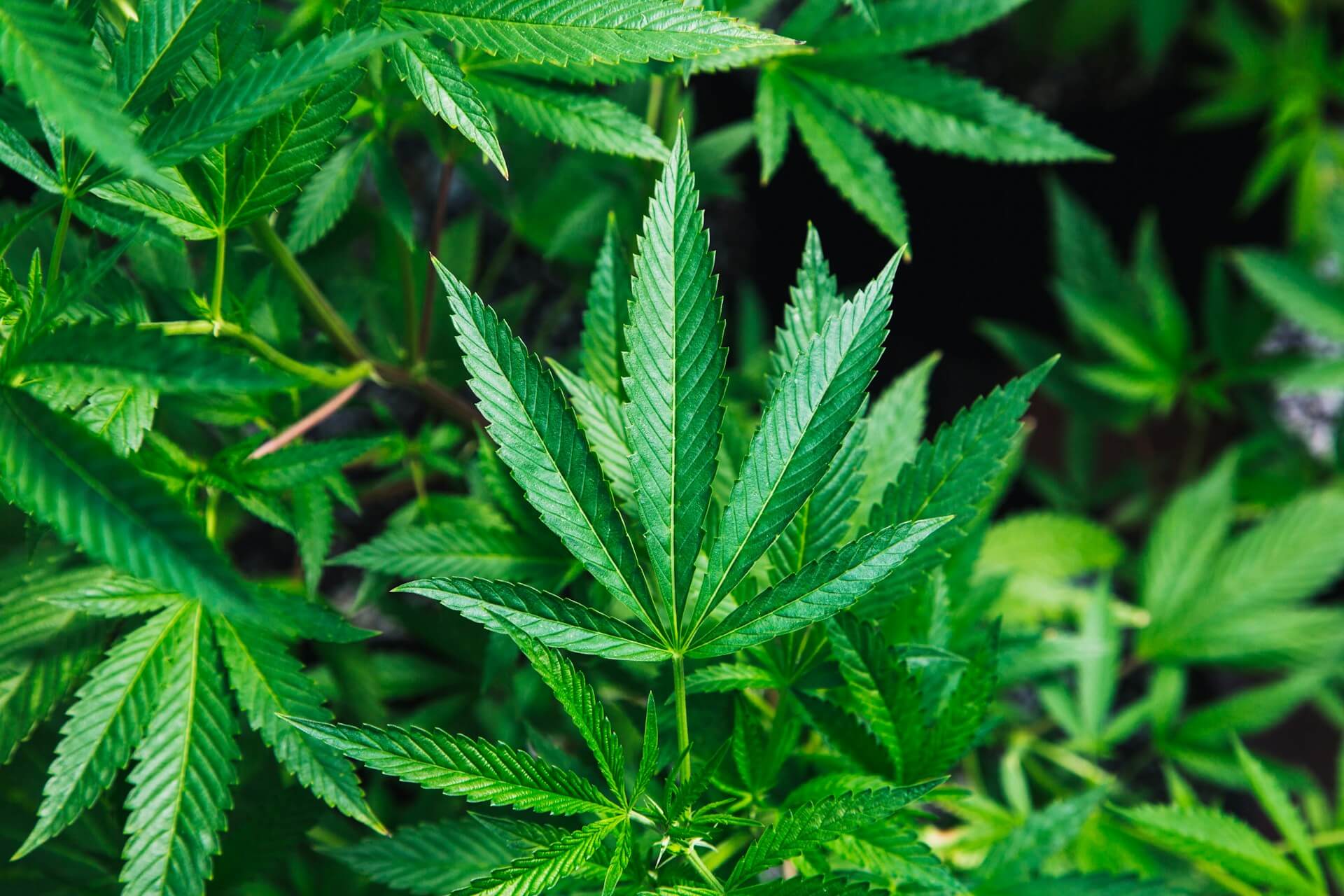
Products for biological control in cannabis cultivation
There are several products on the market designed specifically for biological control in cannabis cultivation, and of course, you can find some of the most effective ones on our website. We tell you more about some of them below, including mites, nematodes, and bacteria that can be applied directly to the crop to combat pests, sometimes in the form of powder or liquid solutions. We are particularly pleased with the results we have obtained with:
Koppert’s Spidex
Spidex is a biological product that uses the predatory mite Phytoseiulus persimilis to combat red spider mites (Tetranychus urticae), one of the most common pests in various crops. This predator can eliminate up to five red spiders or 20 eggs per day, attacking them in all their development stages. Koppert’s Spidex is recommended for preventive use or the control of incipient pests, but in severe infestations, it is advisable to combine it with previous chemical treatments. It works best in temperatures from 13 to 27°C and humidity above 70%.
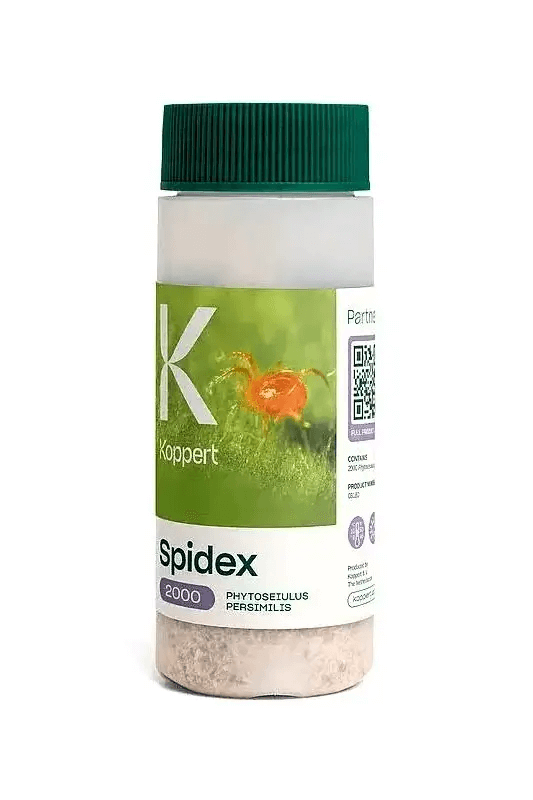
Koppert Ulti-Mite Swiriski
Ulti-Mite Swirski is a product based on the predatory mite Amblyseius swirskii, which combats pests such as thrips and whiteflies. This mite is released onto crops and disperses for several weeks, killing its prey. Its resistance is remarkable, surviving on pollen and in temperatures of 20 to 32 degrees. Each sachet of Koppert’s Ulti-Mite Swiriski contains 250 mites, and at least two sachets per square meter are recommended to ensure effective control. In addition, the packaging is compostable and resistant to drought and humidity.
Koppert’s Entomite-M
Koppert’s Entomite-M contains 10,000 units of the predatory mite Stratiolaelaps scimitus, which biologically combats soil flies and thrips, both vectors of crop diseases. These mites live on the soil surface, at a depth of 1 to 4 cm, where they kill pest eggs and pupae. They are especially effective in areas where chemicals do not reach and, by reproducing throughout the crop cycle, provide continuous and preventive control.
Koppert’s Entonem
Entonem is a biological product containing beneficial nematodes (Steinernema feltiae) to combat various pests such as fly larvae, thrips, caterpillars, and beetles. These nematodes release bacteria inside the pests, converting their tissues into food and eliminating them quickly. Entonem from Koppert is applied by irrigation or spraying, mixing the nematodes with water, and keeping the soil moist for weeks. It is effective in temperatures from 8 to 33°C and its use is recommended during low light hours, repeating the application if necessary.
Trabe’s Bacillus Thuringiensis
A classic for outdoor cultivation! Trabe’s biological insecticide Bacillus thuringiensis (Kurstaki subspecies) is used to combat pests in a natural and environmentally friendly way. It is effective against larvae, moths, white butterflies, and other pests in outdoor marijuana crops. It acts by ingestion, eliminating pests without leaving residues and without affecting beneficial organisms.
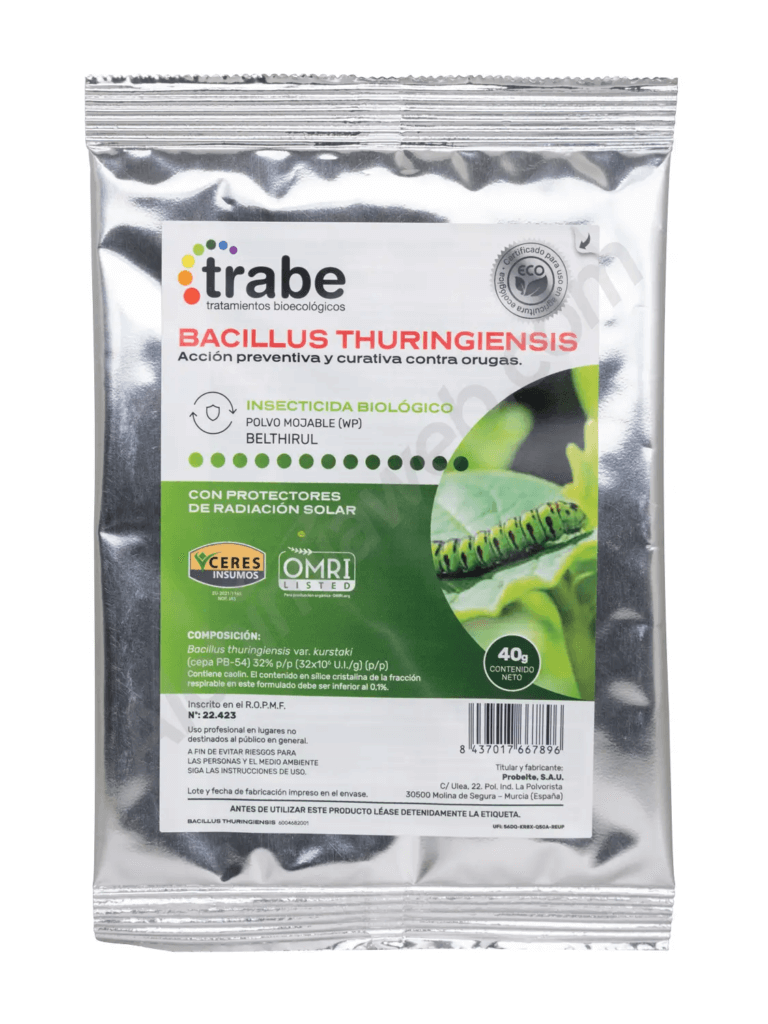
Prevention: your #1 ally against pests
Prevention is key in the fight against pests. Hygiene in the growing area is essential to prevent the proliferation of pests, which includes regularly cleaning the environment, disinfecting tools, and maintaining adequate temperature and humidity control. It is also essential to closely monitor the plants to detect the first signs of infestation, such as discolored leaves, holes, or spots. Don’t forget to check the underside of the leaves too!
In addition, it is advisable to use sticky traps and carry out frequent inspections to ensure a healthy and pest-free crop. Prevention ensures that pests do not become a bigger problem, allowing for a more efficient and healthy crop, and above all, saving you headaches and disappointments. We assure you, it is very annoying to lose a crop because you did not act on a pest in time!
This preventative approach, combined with the use of biological control techniques, can ensure effective pest control without compromising the quality of your cannabis or the ecosystem of your crop, something of no less importance.
Happy harvest!
